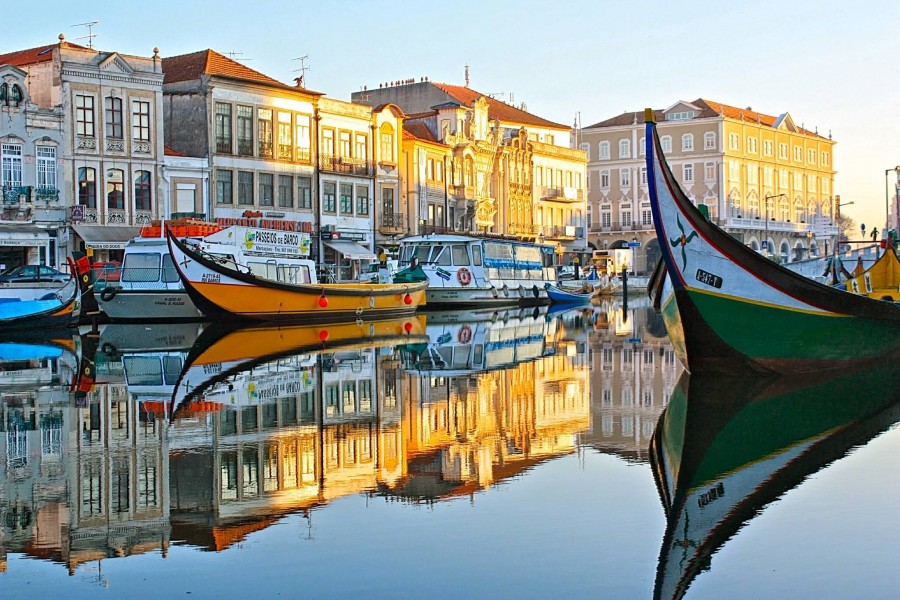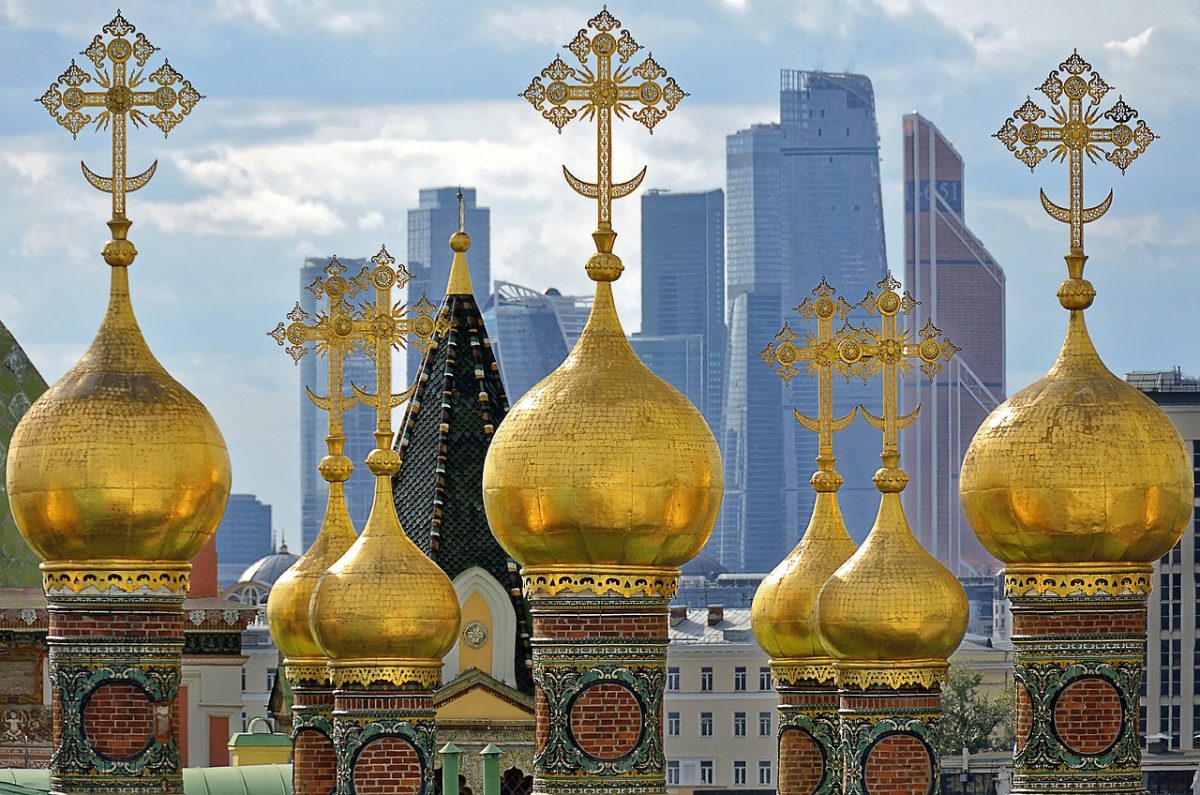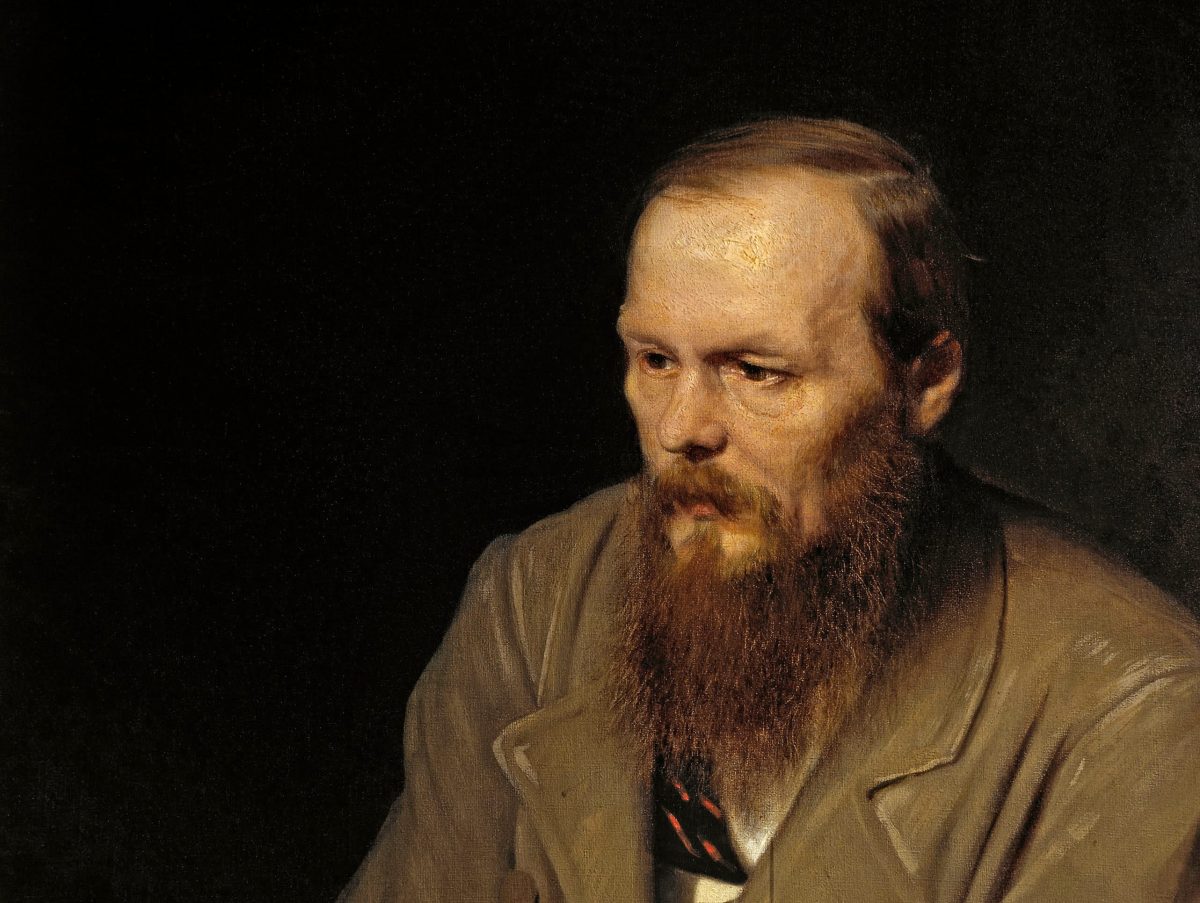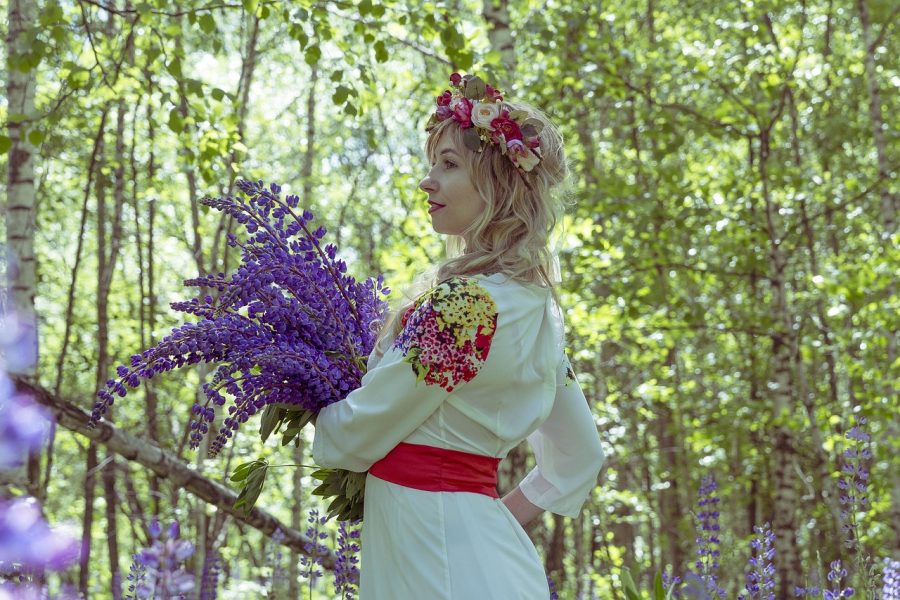Known as the Venice of Portugal, Aveiro is surrounded by salt-flats, beaches and lagoons and dominated by the Central Canal running through town. Once a big sea port, Aveiro lies in a region of valleys cut by mountains and fertile lagoon plains.
The city of Aveiro is crossed by canals, which give it quite an individual character, and in the old quarter tourists can see the quaint whitewashed houses of the fishermen and visit, early in the morning, the Mercado do Peixe, an auction of the fish caught during the night. Of all the boats seen in the area, the moliceiro is the most elegant, being perfectly lined, painted with bright colours and with often ingenious and humorous decorations.
The fine beach of São Jacinto lies close to woodland and the São Jacinto Dunes Natural Reserve, with well preserved dunes and varied fauna and flora. Those who appreciate good food can taste the delicious eel stew and a variety of sea and lagoon fish soups. But Aveiro is specially known for its sweets: the most famous is ovos moles (soft eggs), sweetened egg yolk in candied casings shaped like fish or barrels. Discover the best places to see in Aveiro!
1. Moliceiro boats
The delightful “Moliceiros” boats, similar in design to gondolas, are painted in bright colours and have motifs that depict scenes from the town’s history. These boats, originally used to harvest seaweed, now serve a much more glamorous purpose in transporting tourists around the town’s canals. The beautiful boats are moored in the heart of Aveiro, along the central canal and a short cruise allows tourists to glide past Aveiro’s agricultural roots, historic buildings and modern developments.
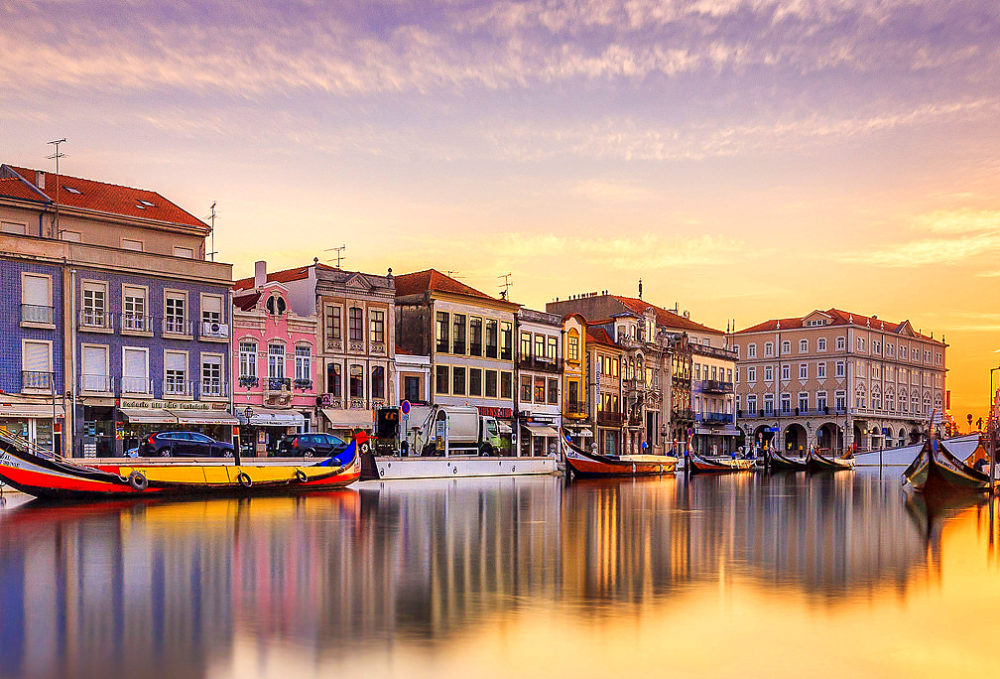
It is highly recommended to take a cruise when first arriving to get a scenic introduction to the town or in early evening to get a picturesque vantage point as the sunsets over the town. There are many small companies jostling for tourist trade along the Rossio and Fonte Nova Lagoon, but all of them take in the main sights so feel free to pick an amiable tour guide and boat. Moliceiro tours start at 10:00 and run until 18:30 (9:30 to 19:00 on weekends) and cost around €8 for a 45 minute boat ride. To avoid congestion boats depart every 30 minutes (15 minutes on weekends). The best spot to pick up a Moliceiro tour is from R. João Mendonça, which is next to Jardim do Rossio and directly in front of the Aveiro City Museum (Museu da Cidade de Aveiro). This area has plenty of charming cafes and restaurants nearby for tourists to visit whilst awaiting a cruise.
2. Try “Ovos Moles”
As well as all that tasty seafood fresh from the water there’s a sweet that is as characteristic of Aveiro as the canals and moliceiros. These are ovos moles (literally soft eggs), made with nothing more complicated than egg yolks and sugar.
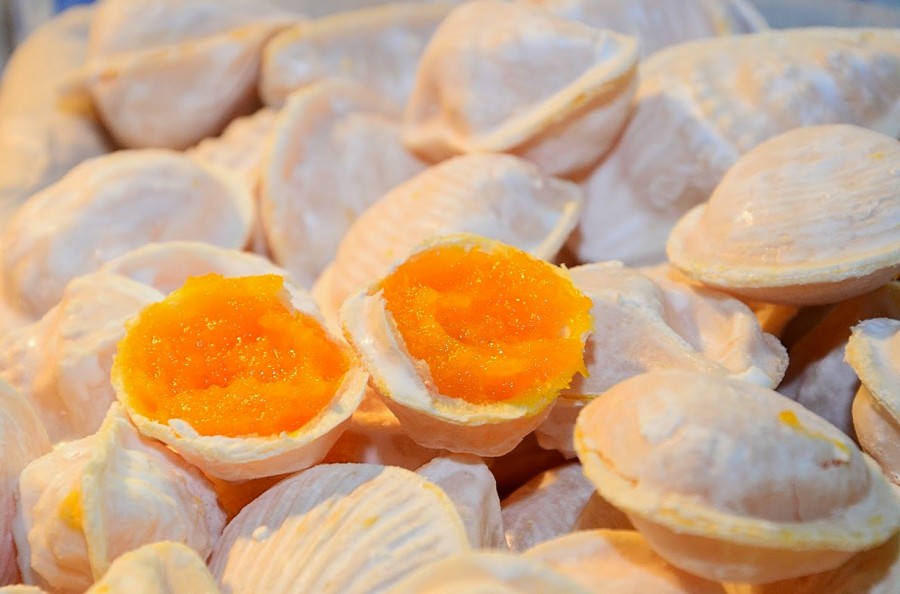
They were originally made by nuns in Aveiro’s old convents (traditionally nuns were gifted eggs by people about to get married), and the recipes were passed to the townsfolk when the religious institutions were shut down. Inspired by the proximity to the ocean and the abundance of shellfish in the Aveiro Lagoon, the ovos moles are hand-shaped to resemble clam and whelk shells.
3. Jesus Monastery
The Jesus Monastery in Aveiro is one of the city’s most important historical buildings and is well worth a visit if you are in the city for a few days. The Jesus Monastery is located right in the heart of the city, opposite to the cathedral and close to many of the city’s major attractions, including the lagoon, Forum Aveiro, the fish market, and the lovely green, park areas. The Jesus Monastery in Aveiro is also known by many as the St Joana Convent in Aveiro, as this is the resting place of Infanta Joana of Portugal, the daughter of King Afonso V who dedicated her life to the order and was buried here after her death in 1490.
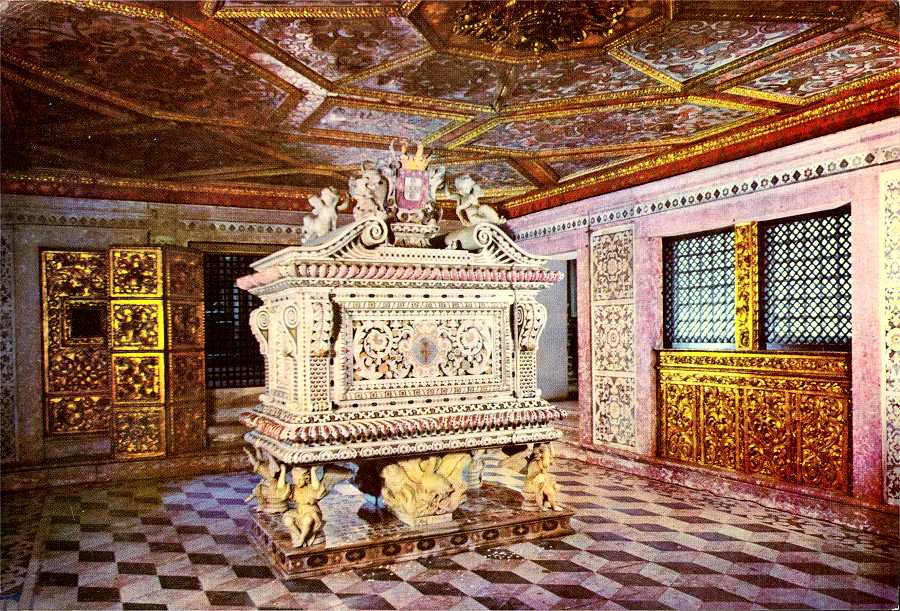
Inside, it is possible to view the tomb of Princess Santa Joana, a masterpiece of mosaic in marble, and a series of tile panels depicting her life. The St Joana Convent in Aveiro is also notable for its beautiful church which dates back to the 18th century, with its sumptuous gilded wood carvings and ornately decorated ceiling. The Renaissance cloisters, which date back to the 16th century, also make a peaceful and contemplative stop on your tour around the site. The monastery is open all year round except public holidays, from Tuesday to Sunday. There is a small entrance fee (around one or two euros), with concessions available.
4. Vista Alegre Museum
Many visitors to Portugal will be aware the country’s rich cultural heritage in porcelain manufacture and craft. Vista Alegre is one of the leading brands in porcelain and its home is to be found here, on the outskirts of the attractive city of Aveiro. The Vista Alegre Museum and Porcelain Factory in Aveiro are not to be missed during your stay in west-central Portugal. The factory was established back in the early 19th century, in 1815, when Jose Ferreira Pinto Basto decided to create a factory dedicated to porcelain, glass and chemical processes, inspired by the success of the glass factory in Marinha Grande.
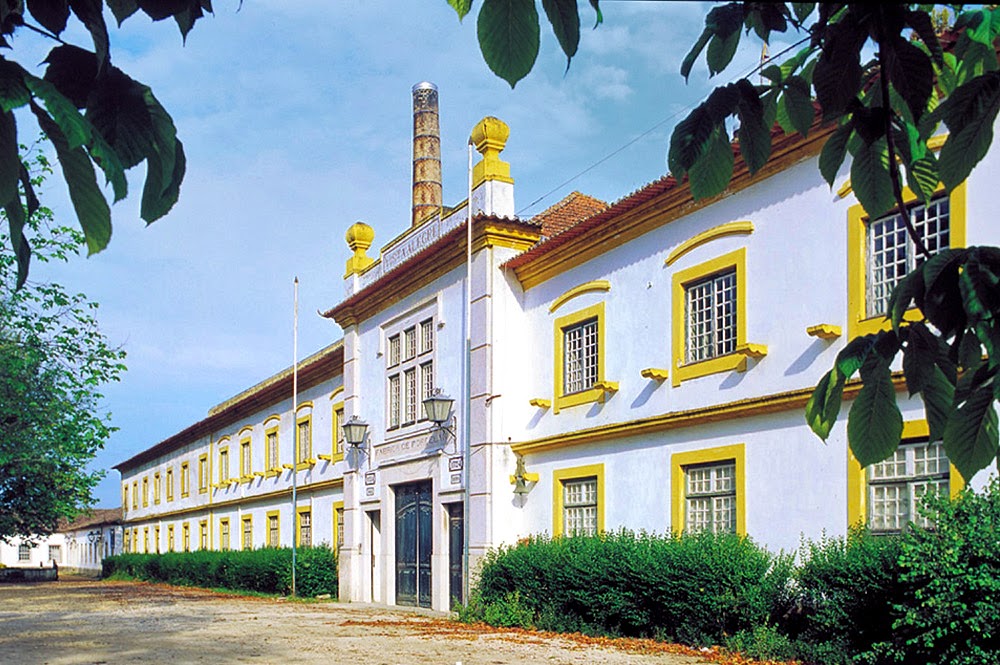
The Vista Alegre Museum and Porcelain Factory in Aveiro make for an enthralling experience, in which visitors can learn about the rich and sometimes rocky history of this unique brand, as well as witnessing the modern-day factory still hard at work producing some of the world’s most famous and notable porcelain pieces. Visitors to the factory will delight in seeing the production process taking place first hand. You will have an opportunity to learn all about the methods for mixing the raw materials of kaolin, quartz and feldspar, and how to select the correct quantities for the highest-quality outcome. An insight into the firing process and decoration of the pieces is also offered.
5. Costa Nova
This oceanfront village is very charming, on a long peninsula with the lagoon on one side and the Atlantic on the other. Before the tourists arrived in Costa Nova this was a fishing village, and there’s a reminder of this time in its cute weatherboard cottages, painted with vertical stripes.
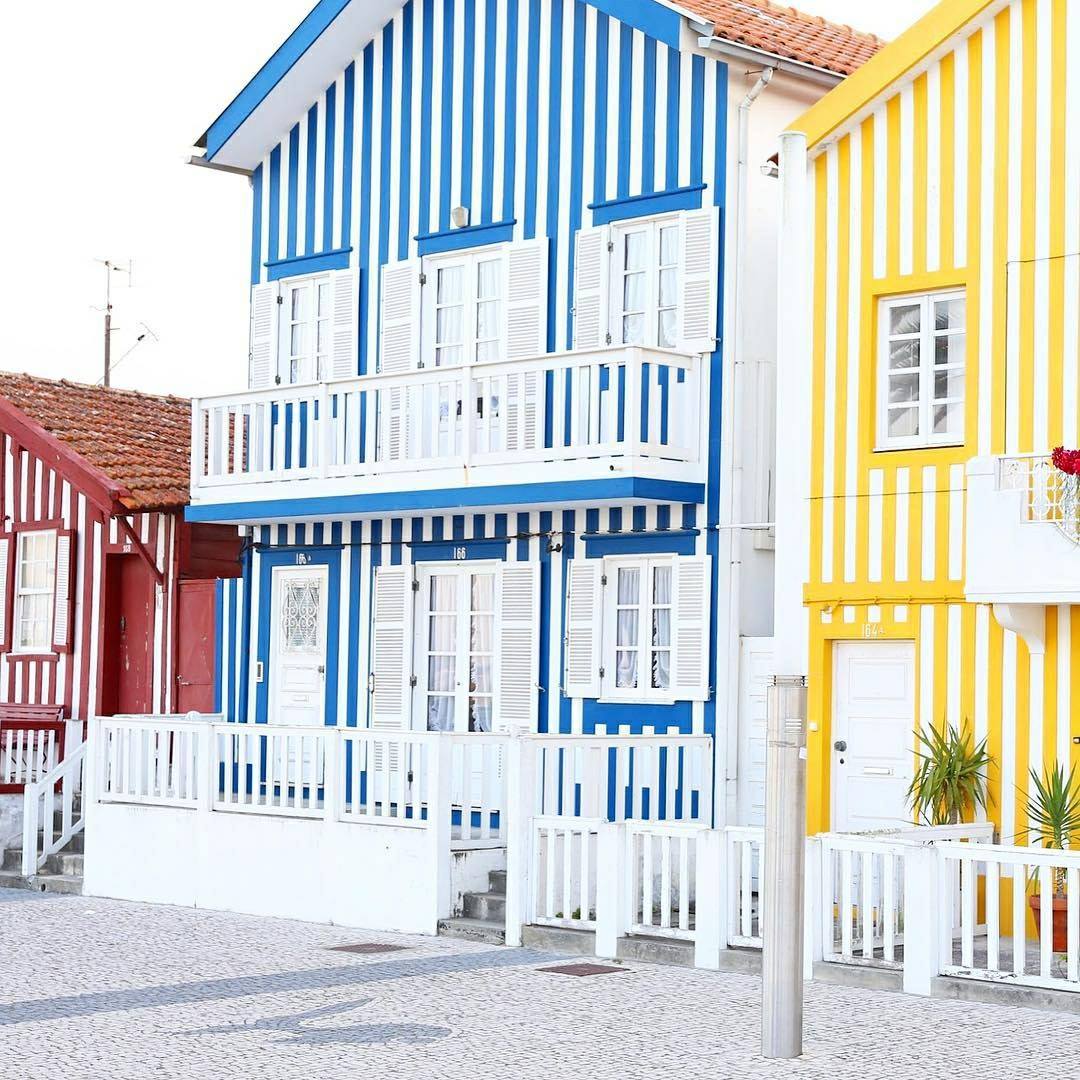
If you’re fond of fish and seafood, the fishing market is a must; here whelks, crabs, goose barnacles and shrimp straight from the lagoon are prepared for you on the Cais dos Pescadores while you wait. It’s one of those rare chances to taste seafood that is literally straight from the water.
6. Old Train Station
If you’re coming to Aveiro by train you’ll be wowed by a slice of the city’s early-20th-century history as soon as you arrive. The old train station terminal stands in sharp relief to the sleek new terminal and was completed in 1916. The special thing about it is the tiling; these blue azulejos were made at the Fábrica da Fonte Nova and depict traditional scenes from around Aveiro and the region.
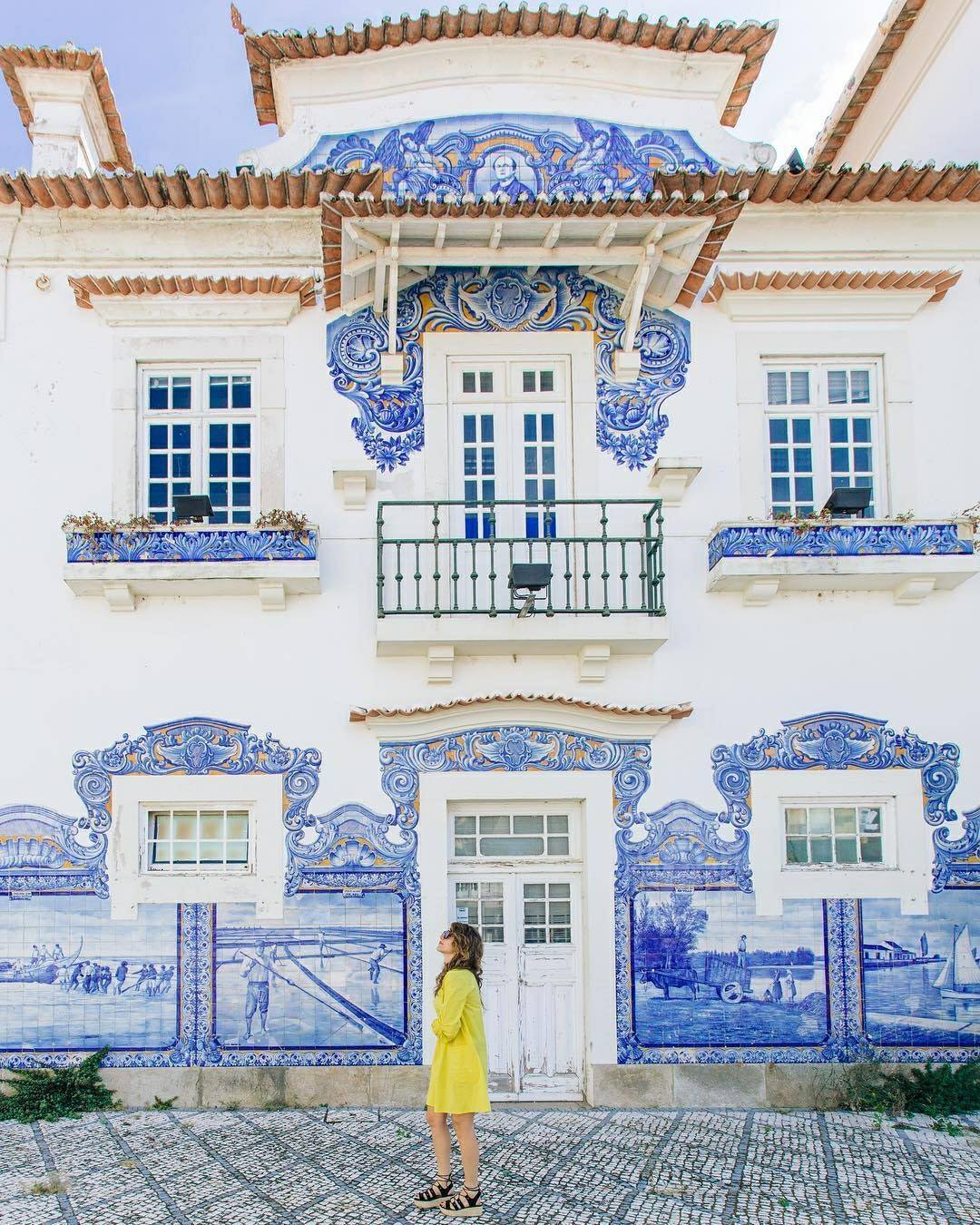
There are moliceiros, salt farms, men and women in regional dress and images of Aveiro’s canals. It’s now a sort of time capsule for the city, created more than a century ago.
7. Museum of Aveiro
The Museum of Aveiro is housed in the old Convent of Jesus of the female Dominican Order. This convent, one of the most ancient convents in Aveiro, dates back to the 2nd half of the 15th century. It was founded by D. Brites Leitão and D. Mécia Pereira. The Princess D. Joana, daughter of the King D. Afonso V, entered this house in 1472, leading a saint life. Therefore in 1693 she was beatified. The Convent became famous mostly because of the presence of Princess Saint Joana and her religious cult.
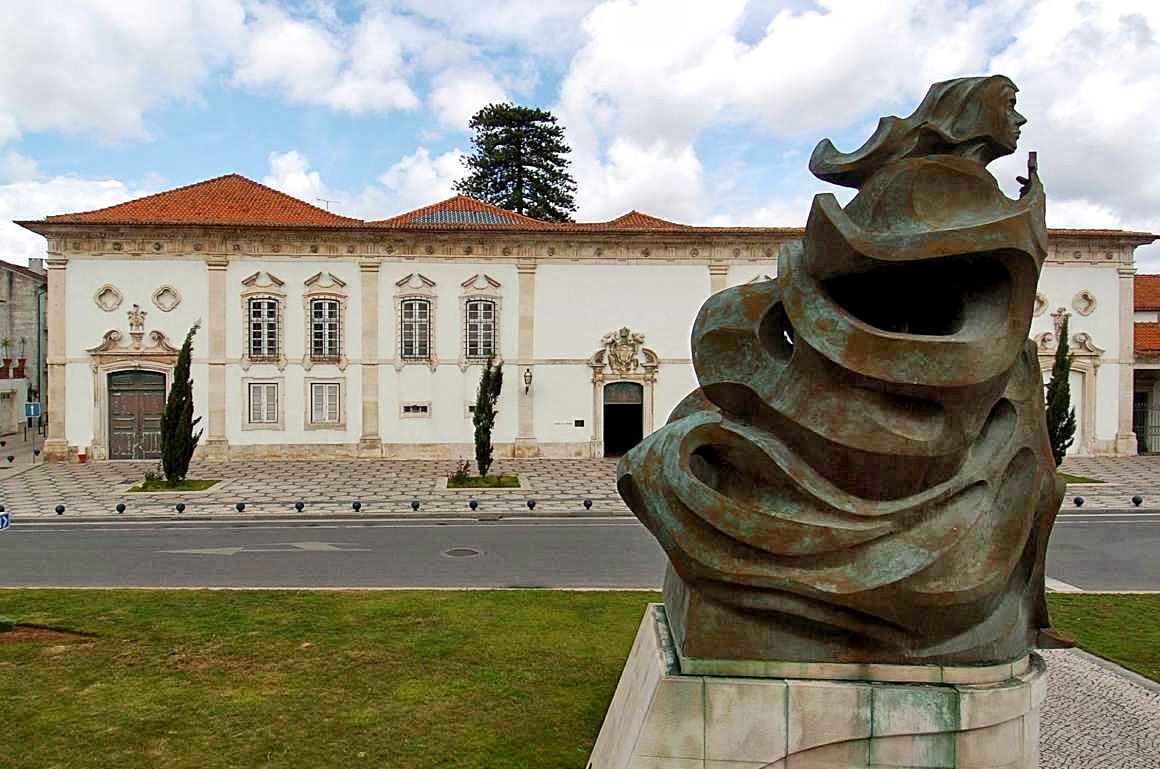
From the 16th to the 18th century the building underwent several works of enlargement, improvement and artistic enrichment. The 19th century was characterised by liberal ideals, thus deeply influencing religious life. In 1834 a decree issued by Minister Joaquim António de Aguiar rules the extinction of religious orders in the kingdom and it was immediately applied in male convents, where female seclusion was permitted until the last nun died. Therefore, seclusion ruled in the Convent of Jesus until 1874.
8. Infante Dom Pedro Park (City Park)
Take a walk through the beautiful and romantic Infante D. Pedro Park in Aveiro. The Parque da Cudade (City Park) also known as Infante D. Pedro Park is located near the franciscan convent of Santo António. At this beautiful park you’ll find a small riverside which leads to numerous small lakes and fountains forming the perfect scenario to relax.
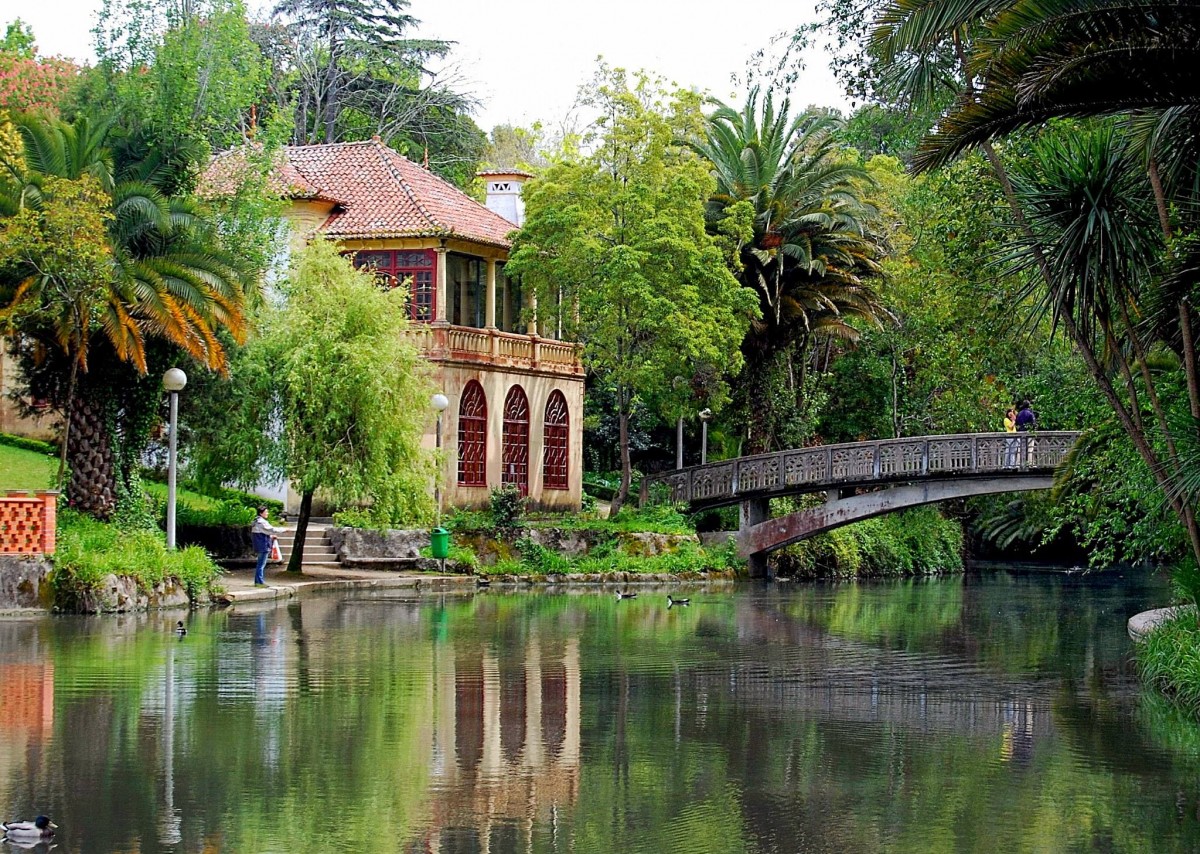
The main elements of this park are the lindens avenue, the iron bandstand, the romantic corners near bridges and the centenary trees. At the Aveiro City Park there’s a coffee with terrace which you might enjoy after your walk through the park. This park has its own parking space outside and has tables and benches for picnics.
9. Vhil’s Urban Art
VHILS’s artwork is a revolution in the stencil technique in its use of unusual tools. Through the destruction of walls, he explores the layers of urban space and its history. Old papers, worn out posters, wood panels, brick walls are attacked with chisels, jackhammer, acid, or explosives, in order to sculpt his stencil on the wall. VHILS’s portraits underline an important contrast between new and ancient; he makes visible the inside face of these buildings. VHILS tries to give a new face to the city which is, for him, a ground of popular inspirations.
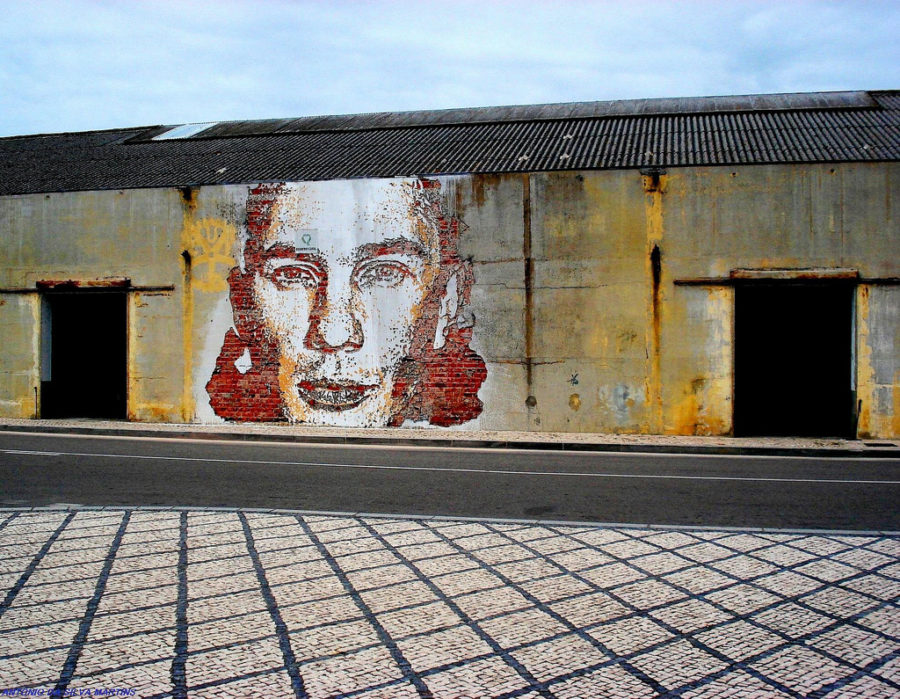
“Scratching the Surface”, is one of his projects. Using construction tools, he exposes and confronts the architectural surfaces as they narrate the story of the graphic and of the city itself. Etching acid and bleach, he begins to depict the canvas to be de-constructed. Then with the use of hammers, chisels and pneumatic drills, he sculpts the stenciled pieces to create texture, dimension and layers. It was what happens at Aveiro: a dazzling face carved into a wall appeared in front of Aveiro’s Railway Station.
10. Art Nouveau
Early in the 20th century, when emigrants who had become rich in Brazil began to return to Aveiro, the city buildings gained the first elements of an Art Nouveau inspired style. Here, this new style which was based on the movement which was flourishing in Europe at the turn of the century, was applied mainly in decorative elements in the façades and was mixed into the conservative vision of the buildings’ exterior and interior aspects. The main novelty of the Aveiro Art Nouveau movement was that it mixed some typical aspects of this style into something very traditionally Portuguese: the tile which was frequently used by masters such as Licínio Pinto and Francisco Pereira.
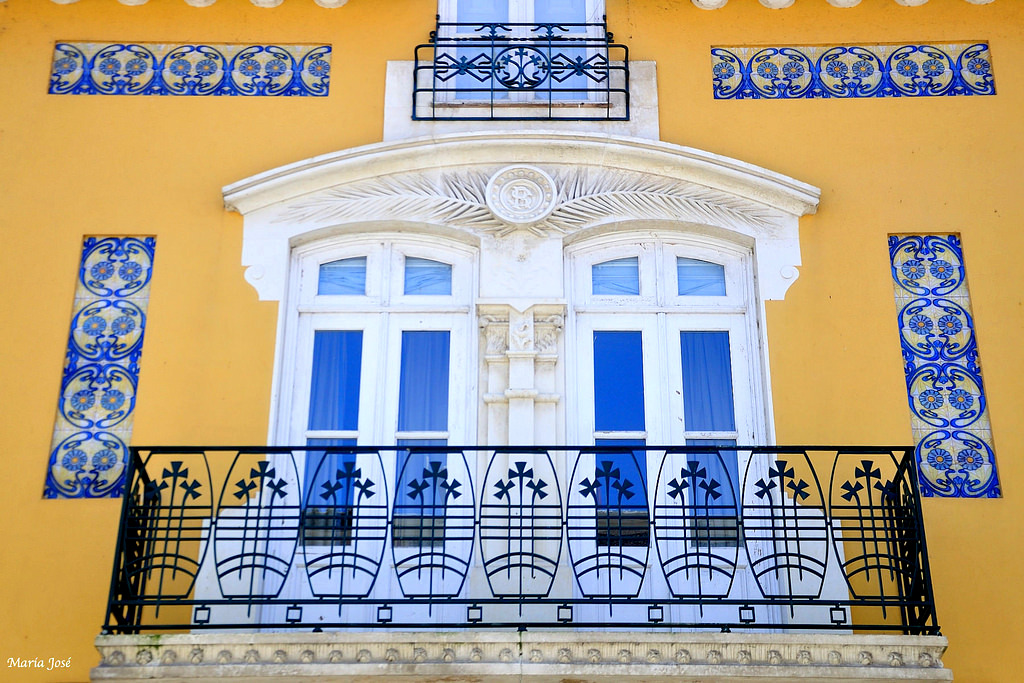
It is at the centre of Aveiro, around the Rossio area and the houses where you can taste the delicious ovos moles, that you will find an interesting assemble of Art Nouveau buildings. The façades, where you can frequently see wrought iron and hewn stone elements, unfold into arcades and bow-windows. Decorations run through columns, go around windows and doors and frame glasses and tile panels. If you love Art Nouveau and want to explore the best tourism in Aveiro, you should try to visit the Program Museum of the City of Aveiro which includes tours to the Art Nouveau Museum and any other centre of the City Museum as well as enjoy a walk in the Aveiro Lagoon.
11. The Aveiro Ria
The “Ria” conquered Aveiro and it became its heart. It is what identifies the city, gives it brightness and life and it has permanently marked local traditions. In Aveiro, everything happens around its 47 kilometres of water next to the sea. It is the “Ria”, a silver mirror, which reflects the colour of the moliceiro boats and the Art Noveau houses; it is what makes Aveiro so seductive and unique. The Aveiro “Ria” began to form during the 15th century, when the shore line moved back and left behind sandpits along an area of eleven thousand hectares which created a lagoon. Nowadays, it has become a real network of canals and islands which has made Aveiro earn the title of “Portuguese Venice”. The water shelters many species such as lamprey clams, storks, herons and some birds of prey or mammals like genettas and otters. Its wealth is so exceptional that the Lagoon has been classified as a protected area.
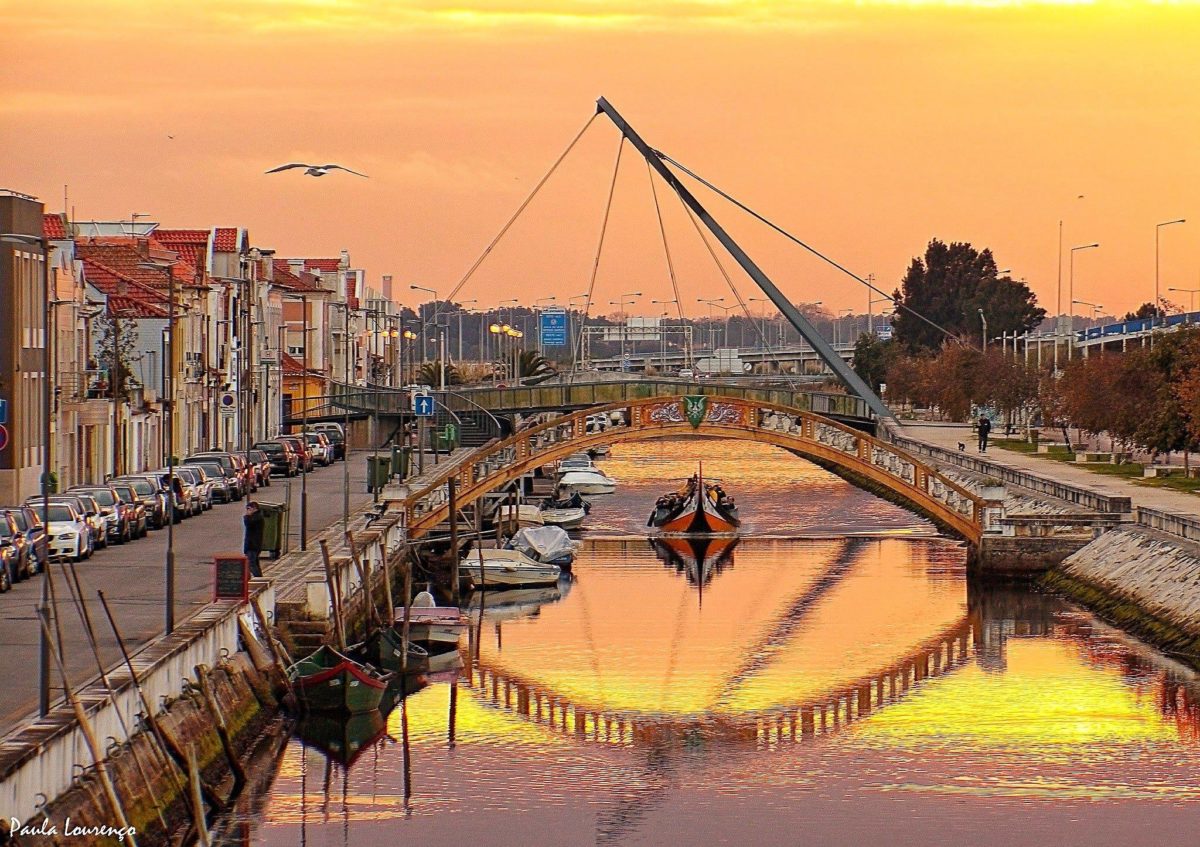
A great part of the Aveiro population has always depended on the “Ria” to work. It has enabled harvesting seaweed, fishing, producing salt and it has also stimulated shipbuilding. Over the last few years, the “Ria” has adapted to modern needs and has enabled the city to develop its tourism through activities such as sea sports. It receives its visitors with open arms. Apart from tours on board a moliceiro boat, the Aveiro “Ria” has many other activities to offer you. You can try sea sports and venture in windsurf or kite surf or be amazed by Aveiro as seen from the sky if you choose to air travel over the “Ria”. You can also rent a BUGA, Aveiro’s Water Bikes and take a relaxed ride between Lago da Fonte Nova and the Capitania.
12. Church of São João Evangelista
Also known as the Carmelite Church, this opulent building was part of a major convent that was almost completely destroyed when Aveiro’s urban plan was reworked at the start of the 20th century. The church dates to the start of the 1700s and was heavily embellished in the decades that followed.
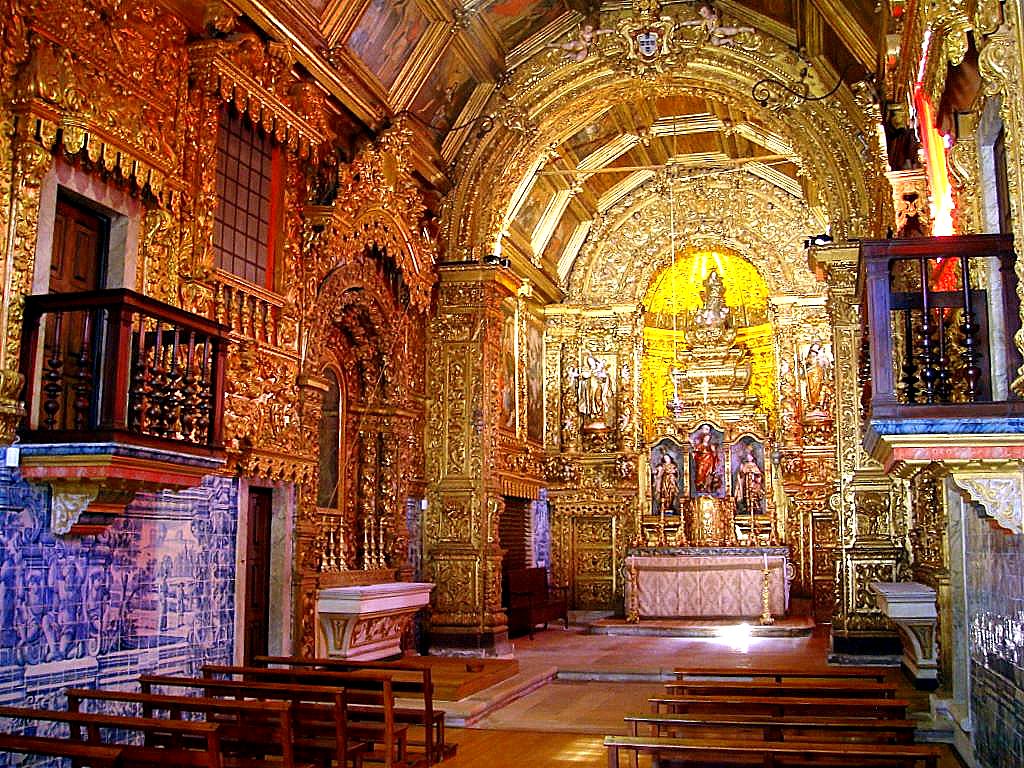
This was a period of extreme wealth, when many churches around Portugal were decorated with dazzling gilded woodwork. And once you pass the stern facade, this church is no different, with gilding framing paintings on the walls and ceiling. The lower half of the walls in the nave is decorated with glorious blue and white azulejos.
13. Praia da Barra beach
Anyone in need of some beach-time can head straight to Praia da Barra, under 10 kilometres from Aveiro. There are two main beaches here; the upper one (Praia Velha) is just where the Aveiro Lagoon reaches the ocean.
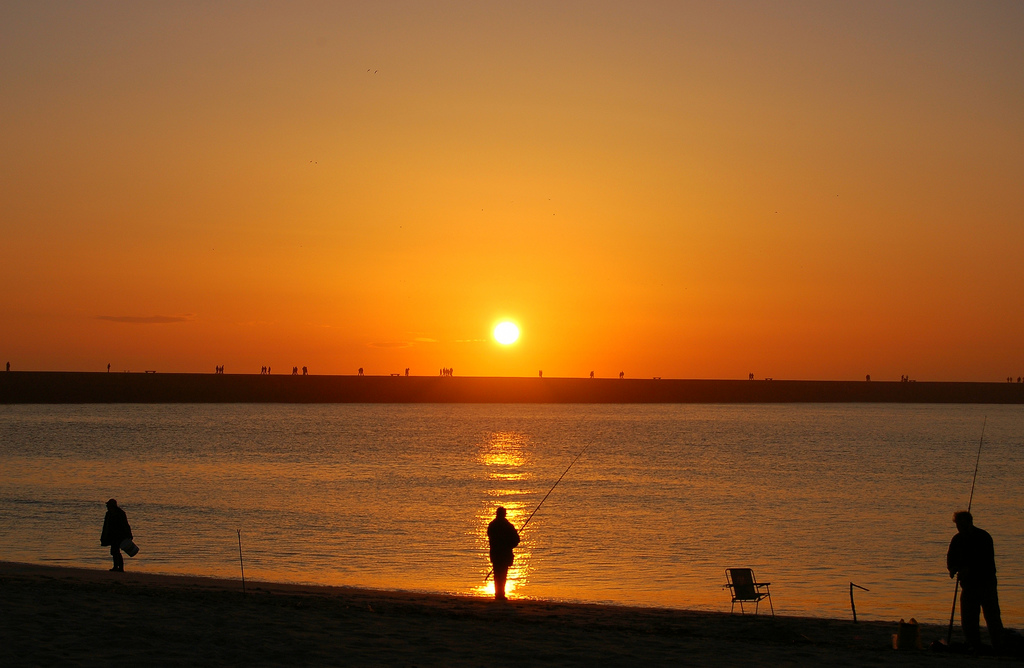
The long breakwaters on either side keep the ocean waves at bay and give you calm waters to bathe in. South of that is a long, open beach, traced by sand dunes and with a long elevated wooden walkway to help you get around. This is a hit with surfers for its rolling waves and there’s a school directly on the beach if you’d like to try.
14. Art Nouveau Museum
The Art Nouveau Museum has opened its doors in Aveiro, located in Casa Major Pessoa, a true icon of art nouveau. The Museum of Art Nouveau (Museu Arte Nova) in Aveiro is the coolest new stop on the Portugal cultural scene. The museum resides in the Casa Major Pessoa, one of the most architecturally admired buildings in the city. Building design is attributed to architects Silvia Rocha and Ernest Korrodi. On the exterior, extraordinary art nouveau detail is evident in the stone façade as well as the wrought iron embellishments. The building is topped by a noble eagle, a theme that carries through to the interior. Inside, tiles are the dominant design element. Lining the walls there are panels of traditional Portuguese azulejos (hand-painted ceramic tiles) depicting art nouveau motifs of birds, animals and flowers. The museum is a multi-level space.
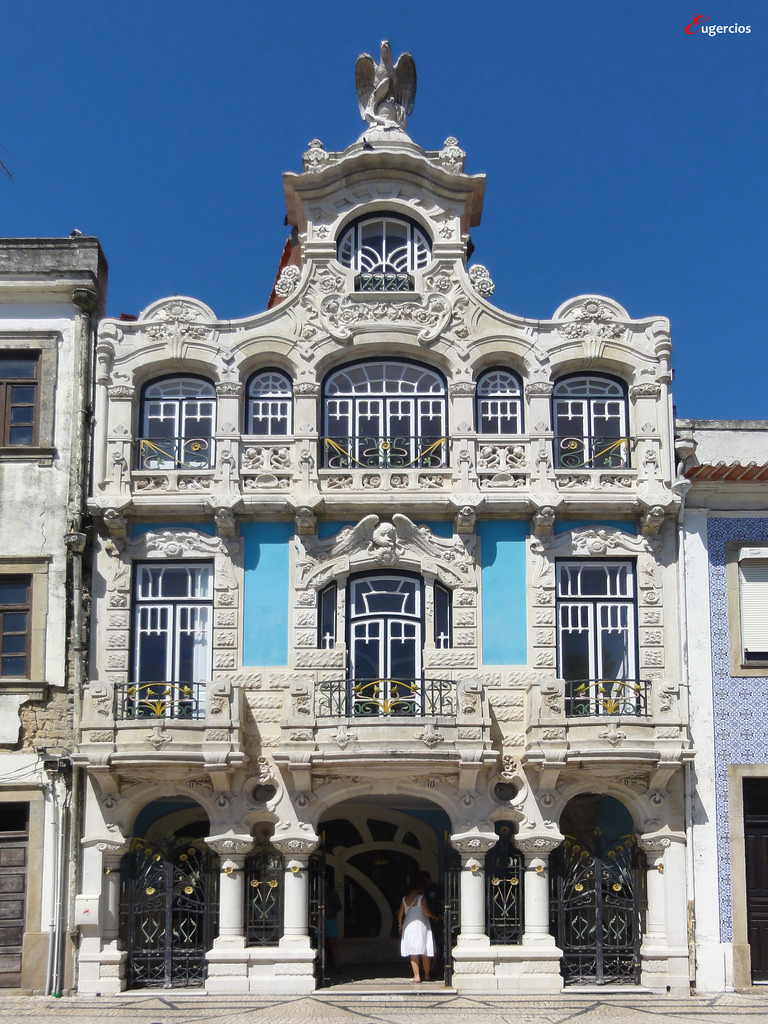
The first floor features a roadmap for a walking tour of 28 iconic art nouveau buildings in the neighborhood. The second floor holds an art gallery of new artists and architects from the city, as well as an auditorium. The top floor is a space for temporary exhibitions. Equally awesome is the Casa de Chá tearoom on the first level. This charming café has an indoor room with bistro tables. An upright piano stands ready for expert or amateur players. Outside, bean bag chairs are strewn about inviting guests to relax and enjoy the open air. A huge range of teas are available, as are specialty coffees such as cappuccino. Local cakes and fresh scones are perfect for completing a day of art nouveau appreciation. Later in the evening, Casa de Chá changes mood and transforms into an ultra chic lounge. Tea pots are put away, and cocktail shakers are brought out. Caipirinhas are the popular choice while listing to ambient electronic music and socializing with friends.
15. Cathedral or Sé de Aveiro
On your passage through Aveiro don’t miss visiting the Cathedral, an important spiritual and cultural symbol. Aveiro’s Cathedral, also known as S. Domingos de Aveiro Church is located close to the historic centre of Aveiro. It was founded in 1423 by D. Pedro. From the original construction only a carved wall remains, as the porch dates back to 1719.
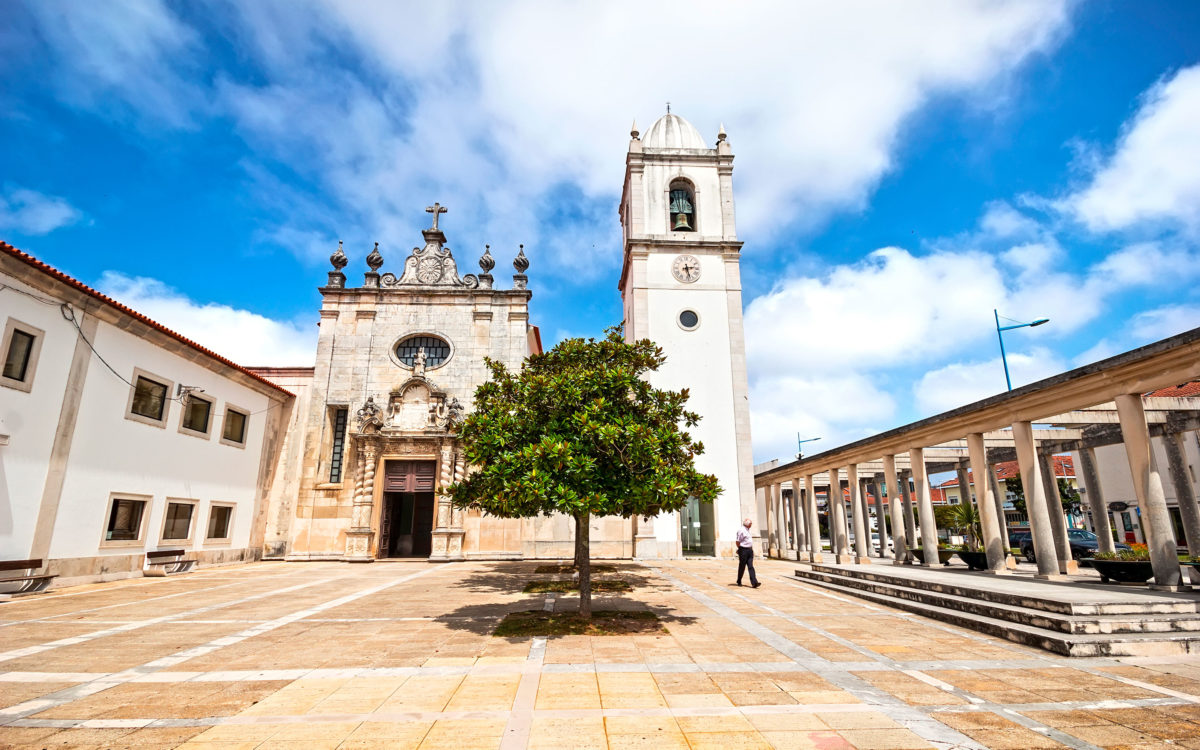
In the interior you might find the famous S. Domingos Cross, in gothic style, dating back to the XV century. This cathedral suffered many changes throughout its existence and this is why there are many different architectonic styles present as the mannerism on the side chapels, the baroque in the higher choir, and modernism on the transept and on the major chapel. The most important elements on this Cathedral are: the Nossa Senhora da Misericórdia Chape, the Santa Joana Chapel, the Coração de Jesus Chapel, the Nossa Senhora do Rosário Chapel, the organs and others.
